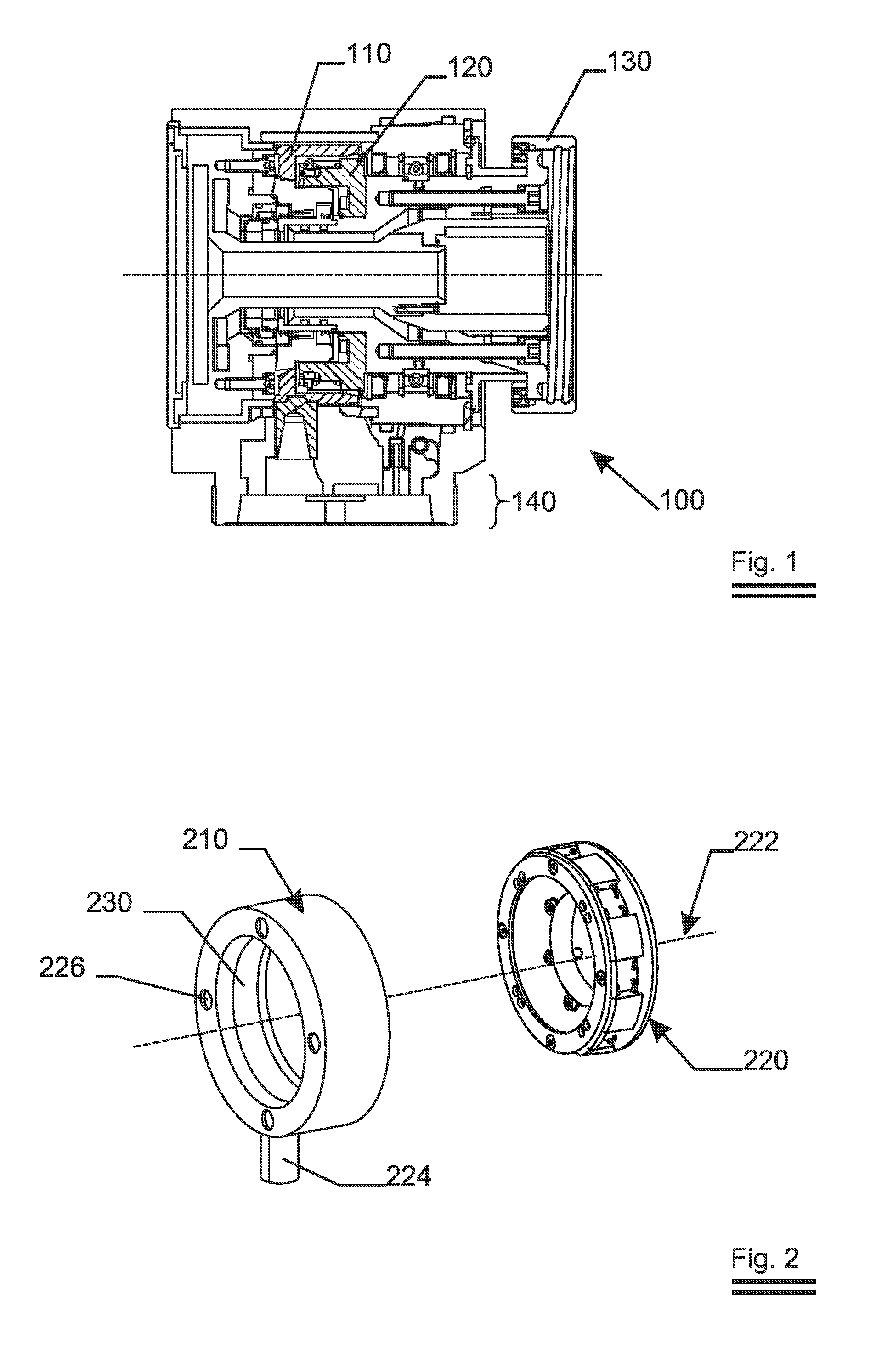End-Block for a Rotatable Target Sputtering Apparatus
a sputtering apparatus and end block technology, applied in the field of sputtering apparatus, can solve the problems of new problems, dc supply problems, and serious drawbacks, and achieve the effect of reducing noise and low electrical nois
- Summary
- Abstract
- Description
- Claims
- Application Information
AI Technical Summary
Benefits of technology
Problems solved by technology
Method used
Image
Examples
Embodiment Construction
[0038] The invention concerns an end-block of which FIG. 1 shows an actual cross section 100. This particular end-block combines the functionalities of rotatably carrying one end of the tube, feeding and collecting coolant—usually water—to and from the target and transferring electrical current to the target. As the invention primarily concerns the latter functionality, the implementation of the other functionalities will not be discussed in detail since they are not crucial to understand the gist of the invention. The target (not shown) is inserted into and held by the clamping ring 130. The end-block 100 is held by a quick release coupling (not shown) that engages the holding section 140 to the sputtering apparatus (not shown). The socket 110 receives the spindle 120, the latter being rotatable with respect to the former.
[0039]FIG. 2 shows an isometric view in which the cylindrical socket 210 and the spindle 220 are shown separated from one another. Both parts share the same rota...
PUM
| Property | Measurement | Unit |
|---|---|---|
| Electrical conductor | aaaaa | aaaaa |
| Resilience | aaaaa | aaaaa |
Abstract
Description
Claims
Application Information
 Login to View More
Login to View More - R&D
- Intellectual Property
- Life Sciences
- Materials
- Tech Scout
- Unparalleled Data Quality
- Higher Quality Content
- 60% Fewer Hallucinations
Browse by: Latest US Patents, China's latest patents, Technical Efficacy Thesaurus, Application Domain, Technology Topic, Popular Technical Reports.
© 2025 PatSnap. All rights reserved.Legal|Privacy policy|Modern Slavery Act Transparency Statement|Sitemap|About US| Contact US: help@patsnap.com



